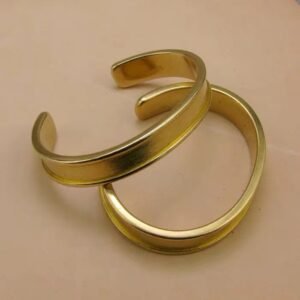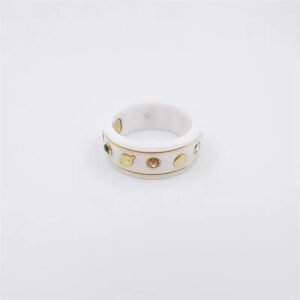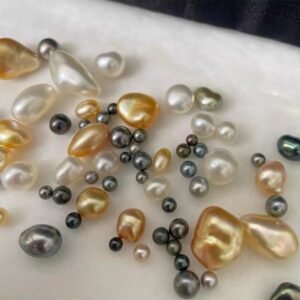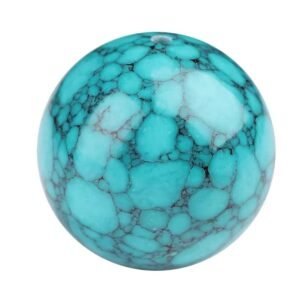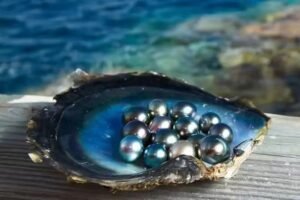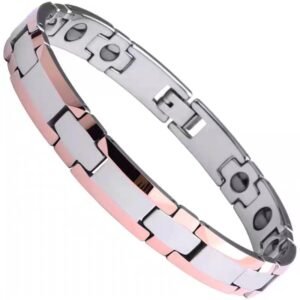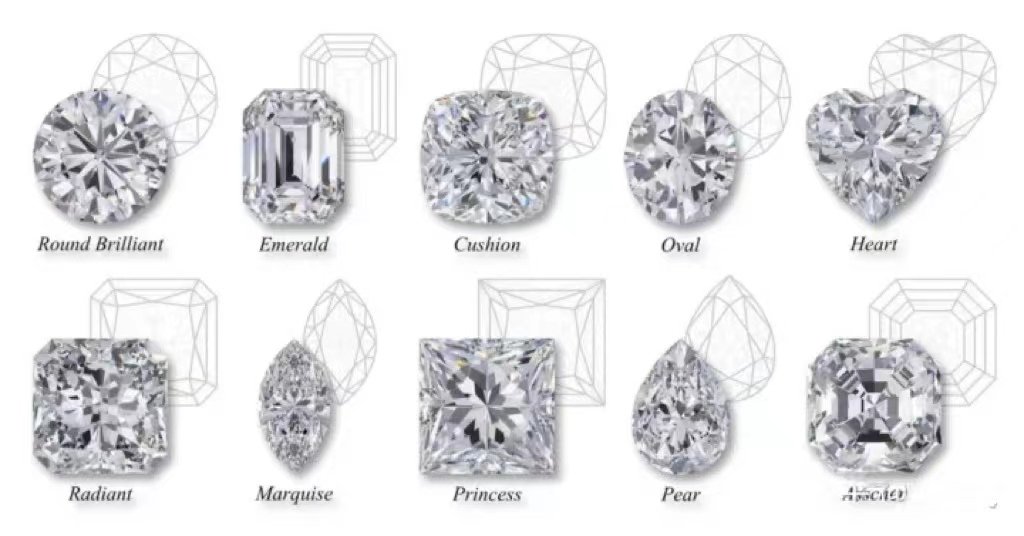
As a jewelry manufacturer, I like to learn about jewelry.I’ve read many books and looked at much literature, and there’s a lot to learn about diamonds. I tried to write some myself, hoping to help readers and friends.
A diamond that can shine brightly depends entirely on the proper proportions of the diamond’s Cut, the quality of the polish, and the symmetry of the facets, which are also the measures of the diamond’s cut grade.
10 kinds of diamond cut shape
Round Brilliant Cut
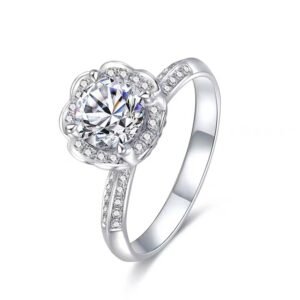
Shape: round
Cut: Bright/Brilliant
Origin: 1919
The diamond cuts on the market are generally standard round diamonds. There are 58 facets in this Cut. The plane at the top is called the table; the part with the largest diameter is the girdle, above the girdle is the crown, and below the girdle is the pavilion.
In 1919, the Antwerp cutter (Marcel Tolkowsky), through optical calculations, drew the cutting style of a round diamond, which can reflect the fire and luster very well. There are 58 facets for the facet and the pointed bottom. For small diamonds below 25 points, there is no tapered bottom. There are 57 facets, thus laying the foundation for the standard round diamond cutting. But a four-pointed rough cut at this ratio loses the most weight. So this can only be used as a reference. The Tokowski Cut Ratios are Average Waist Diameter: 100% Table Top: 53.0% Crown Height: 16.2% Pavilion Height 43.1% Crown Angle: 34 degrees 30 points Pavilion Angle: 40 degrees 45 points This cutting ratio lays the foundation for the ideal Cut of a diamond. The cutting ratio varies from region to region. The Tokowski cut is also called the American Cut, and the others include German Cut and European Cut.
Oval Brilliant Cut
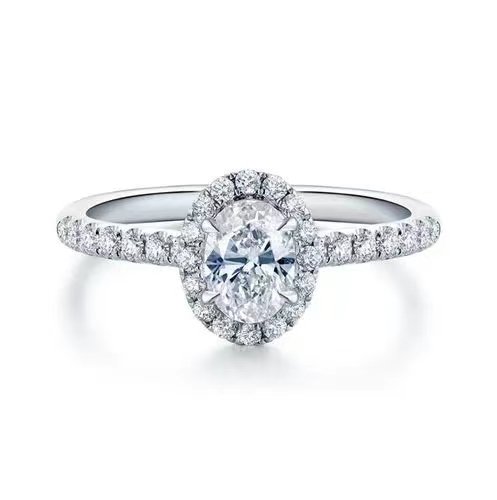
Shape: Oval
Cut: Bright/Brilliant
Origin: 19th century
Has a bow-tie effect. Oval brilliant-cut diamonds have a rough retention rate of 50% to 60%, which is suitable for long-shaped octahedron rough diamonds. Also, because it preserves the high quality of the diamond, it is used in many recuts of ancient diamonds.
Outline Requirements: Shoulder Symmetry
Pear Brilliant Cut
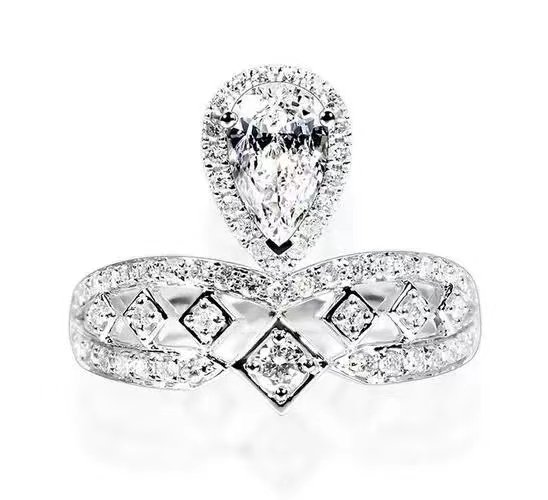
Shape: pear shape
Cut: Bright/Brilliant
Origin: 17th century
The pear cut, also known as the Tear Cut or the Pendloque Cut, has a bow-tie effect.
The pear cut was trendy during the Louis XIV era in France. It was used in nearly 20% of historically famous diamonds, including the largest diamond in the world: the Cullinan 1. This Cut is suitable for rough diamonds with broken or flawed corners on one end. When inlaying, pay attention to the protection of sharp corners. Profile requirements: symmetrical wings on both sides, no defects in sharp corners
Marquise Brilliant Cut
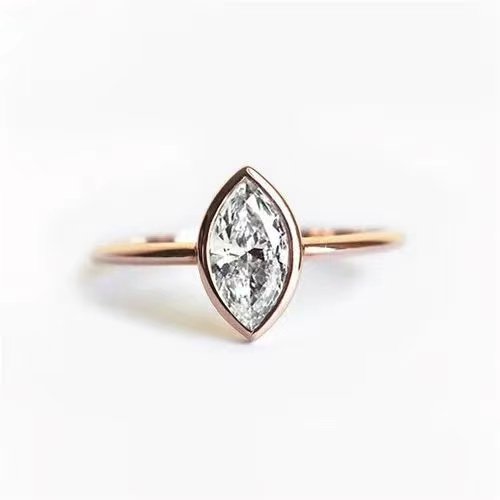
Shape: Marquise
Cut: Bright/Brilliant
Origin: 17th century, under Louis XIV of France
Marquise cut is also translated as marquise cut or boat cut. A diamond with this Cut has sharp corners at both ends and is shaped like a fruit pit, hence the name. Has a bow-tie effect.
This Cut has a low rough retention rate. Sharp corners at both ends characterize it. The inclusions can be better concealed, and the sharp corners are extremely shiny. When inlaying, you need to pay attention to the protection of the sharp corners.
Profile requirements: sharp symmetrical corners, no defects
Square Brilliant Cut
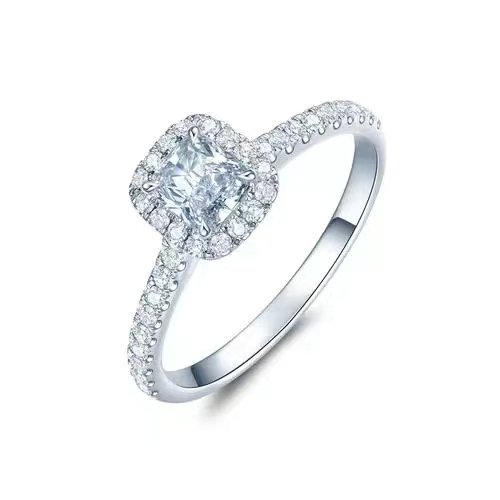
Shape: square
Cut: Bright/Brilliant or Mixed
Origin: mid-century
Invented by Belgian artisans, the square-cut has been continuously refined, resulting in a series of improved forms.
Since its improved form combines the characteristics of a stepped cut, it can also be classified as a hybrid cut.
A square-cut has a square or rectangular shape and usually has 76 facets. But there are also 61, 101, or 144 facets. Among them, the brilliant square cut with 101 facets is the registered patent cut of E.F.D. Diamond Company that is, the princess cut.
Square cuts can vary but generally have a shallow crown, a larger table, and a darker pavilion.
This Cut has a higher rough retention rate than other brilliant cuts. However, it is not suitable for rough diamonds with a shallow pavilion.
The brilliance and sparkle created by the sharp corners and pavilion facets reduce the inclusions’ visibility and slightly “raise” the diamond’s color grade and appearance compared to a round-cut diamond of the same weight, about 15% larger.
The square shape is suitable for seamless settings where the diamonds are closely spaced, which other forms cannot do. However, the sharp corners need to be protected when setting.
Brilliant Heart Cut
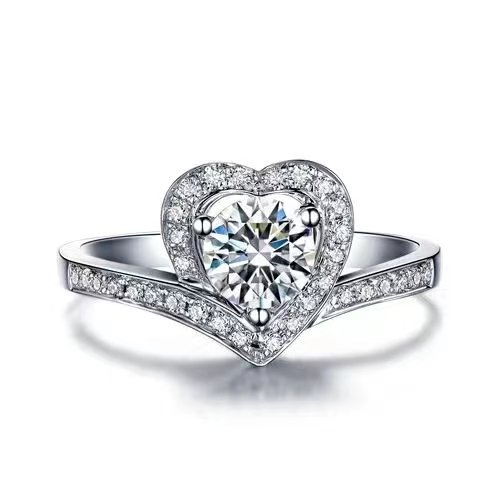
Shape: heart shape
Cut: Bright/Brilliant
Origin: Modern
The shape of the diamond is composed of two symmetrical lobes, a central groove, and a pointed corner at the bottom, resembling a heart shape.
Heart-shaped diamonds have a shallow overall depth and are suitable for rough diamonds with irregular shapes and a relatively flat overall condition. Inclusions in the original grooves can remove to improve diamond clarity. Low.
The shape evaluation of a heart-shaped diamond mainly focuses on the symmetry of the lobes on both sides and the whole shape.
Emerald Cut
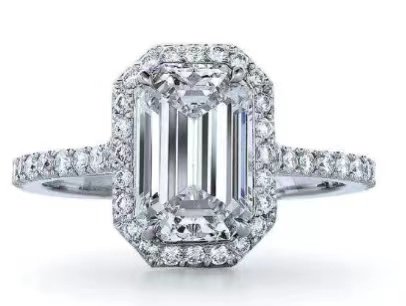
Shape: Rectangular
Cut: Stepped
Origin: Ancient
The emerald cut is a derivative of the typical step cut, with all facets parallel or perpendicular to the diamond’s square outer girdle, a rectangular shape, a flatter pavilion and crown, and a linear culet. Because it is often used to process gem emeralds, it is called emerald cut.
Emerald-cut diamonds are more challenging to cover eye inclusions. They are suitable for rough diamonds with high clarity, rectangular, slightly damaged corners, or inclusions. The uneven stone retention rate can reach as high as 60% to 70%.
Outline requirements: pay attention to the size of the four corners, and the lines and surfaces must be strictly parallel.
Radiant Cut
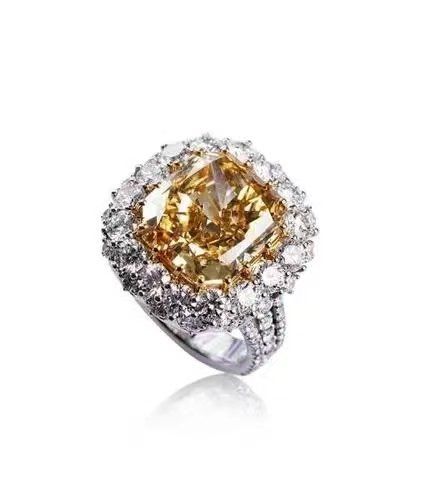
Shape: Rectangular
Cut: Mixed
Origin: 1977
Invented in 1977, the Radiant Cut was created by artisans who wanted to combine the elegant shape of an emerald cut with the brilliance of a round cut.
Radiant has a rectangular shape with cut corners. It considers the high rough retention rate of emerald cuts and the easy-to-match form. Also, it has excellent brilliance, such as brilliant round cuts.
The Radiant Cut is suitable for rough stones that are slightly rectangular with damage and flaws in the corners, and the uneven stone retention rate is high.
The Asscher Cut
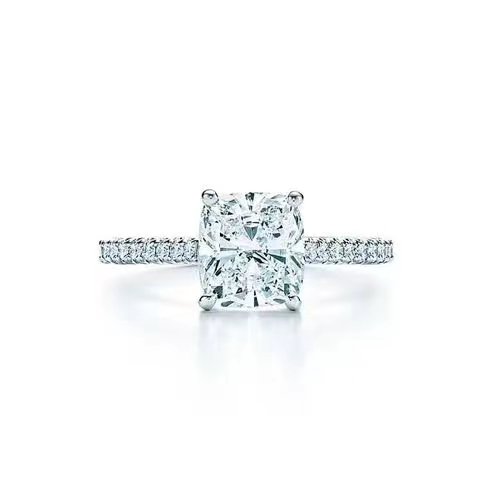
Shape: square
Cut: Stepped
Origin: 1902
The Asscher is the same type as the trapezoid, with the same step cut on the edge, except that the diamond is square. The Royal Asscher Diamond Company initially designed this Cut in 1902, hence the name. Elizabeth Taylor’s 33-carat diamond ring featured this Cut.
The Cushion Cut
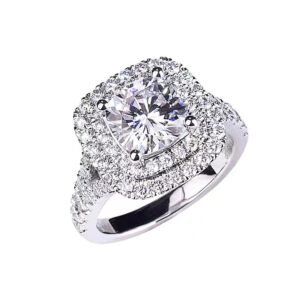
The combination of round and square features makes the pillow one of the most classic and popular styles with a timeless charm. The 15-carat diamond ring of socialite Kim Kardashian is representative of the cushion shape.
How do we identify the value of diamonds?
The 4C evaluation standard has become a recognized diamond evaluation rule. 4C is Carat , Color , Clarity , Cut .
Carat
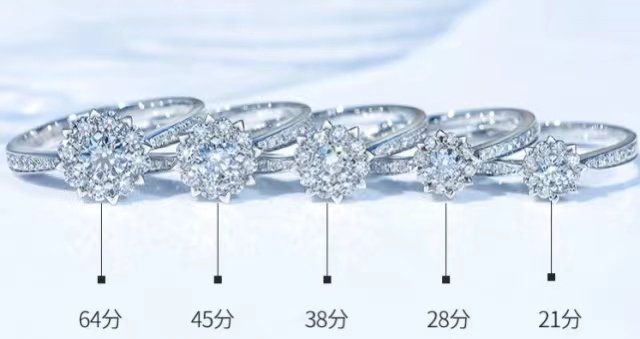
Carat (ct) is the unit of weight for gemstones, and one carat is equal to 0.2 grams. If the diamond is smaller, it can also be measured in points (pt), where 1 carat is equivalent to 100 points. Carat weight indicates the size of the diamond. Other things being equal, the bigger, the better. Of course, specific to each person, due to personal preferences, the thickness of the fingers is different, so the choice can also be based on your preferences, and the one that you feel is the most suitable is the best. The diamond maps of different sizes are attached for reference.
Color
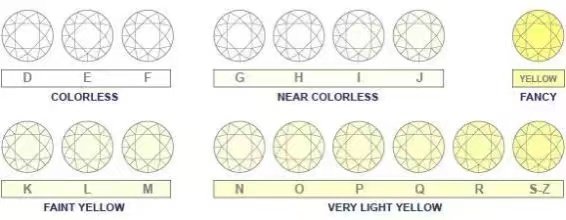
The whiter the diamond, the better, and the higher the value for white diamonds. The industry standard for color evaluation begins with a capital letter D, which represents the highest quality colorless and the highest value. Then it increases to Z in the order of 26 English letters. Its color will gradually take a slight yellow and brown tones, and the darker the style, the lower the price.
Clarity
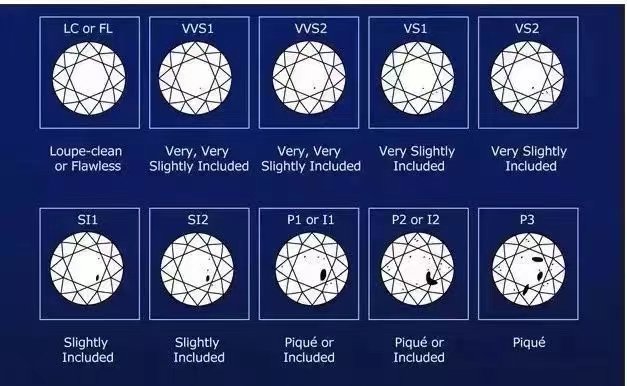
In a nutshell, Clarity refers to whether a diamond is clean on the inside and flawless on the outside. The higher the clarity grade, the better the quality of the diamond and the higher the price. Because diamonds are formed deep in the earth and experience extremely high temperatures and pressure, they always have natural growth marks. Pure natural flawless diamonds are scarce. Depending on the size, nature, location, color, or prominence of inclusions and flaws visible under a 10x magnifying glass, diamond clarity can be classified as follows:
FL: Flawless inside and out, i.e., no inclusions and imperfections visible under a 10X magnifying glass.
IF: Internally flawless, that is, under a 10X magnifying glass, no internal inclusions are visible, only external defects.
VVS1&VVS2: Very slight flaws. It is challenging to observe defects under a 10X magnifying glass. The inclusions of VVS2 are more severe than those of VVS1, which are easier to follow.
VS1 & VS2: Slight flaws, tiny inclusions, and difficult to see under 10X magnifying glass. VS1; VS2 are easier to see under a 10X magnifying glass.
SI1&SI2: Slight defects, the inclusions are more evident under 10X magnifying glass, and the inclusions of SI2 are more severe and more evident than SI1.
I1, I2 & I3: Flawed; the inclusions are noticeable under a 10X magnifying glass and will affect the transparency and brightness of the diamond. The larger the number, the more pronounced the inclusions are. If the inclusions are extremely obvious and impact the visual effect of the diamond, it is generally not recommended to buy
Cut
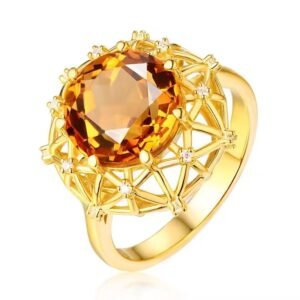
The cut grade of the diamond will indicate on the diamond certificate. The cut grade can be divided into Excellent (ideal Cut), Very Good (perfect Cut), Good (good Cut), Fair (general Cut), and Poor ( Poor cut) in five grades. The highest level of diamond cut is 3EX; that is, the diamond’s cutting ratio, polishing quality, and facet symmetry have reached the Excellent (ideal Cut) level.
1. Ideal Cut: (EX) All are ideal Cuts, that is, perfect polishing, perfect symmetry, a standard that only 3% of first-class high-quality diamonds can achieve, and the most advanced polishing and symmetry make natural diamonds have the best of fire.
2. Perfect Cut: (V.G.) represents about 15% of the diamond cut, which can make natural diamonds reflect the light of standard grade cuts.
3. Good Cut: (G) represents about 25% of the diamond cut. The natural diamond reflects most of the light that enters the interior of the diamond.
4. General cut (F): It represents the Cut of a diamond with a roughness of 35%, which is still a high-quality natural diamond, but the light reflected by a natural diamond with a general cut is not as good as that of a grade G cut.
5. Poor: This includes all-natural diamonds that do not meet general cut standards. These natural diamonds are either deep and narrow or shallow and wide, allowing light to escape from the sides or bottom.
Summary: As technology evolves, I believe people will create more ways to cut diamonds. We are also working hard to innovate and improve so that friends who love diamond jewelry can get the most suitable diamonds. If you have better ideas, don’t hesitate to get in touch with us, we will turn your ideas into reality.

